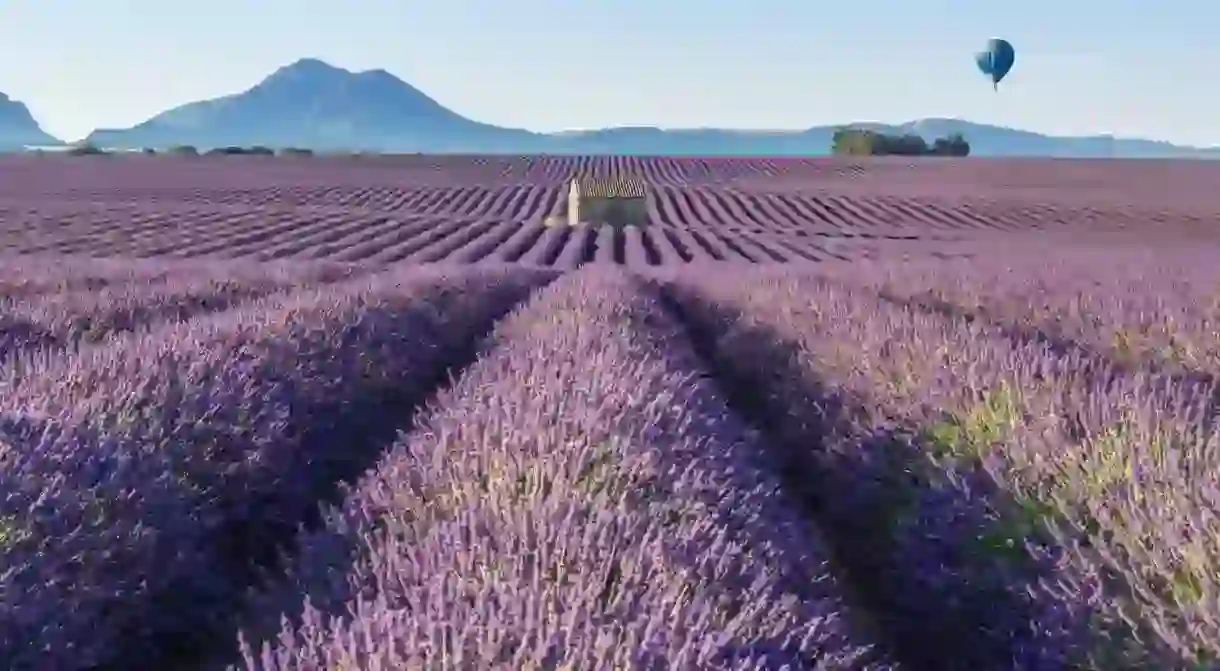Reasons Why You Should Visit Provence at Least Once

World-renowned artists have called Provence home over the centuries and for good reason. Lavender fields, Provençal rosé and Marseille’s Corniche Kennedy inspire visitors – whether painting or otherwise. There are numerous reasons to visit this sunny southeastern corner of France, which includes Aix-en-Provence and the fashionable Riviera around St Tropez and Cannes, so here’s our guide to make your holiday planning that little bit easier.
So you can sample delicious pale rosé wine
Winery

You might be more of a full-bodied red or crisp white wine drinker in the pub, but it would be sacrilege to travel all the way to Provence and not taste its world-famous rosé. Sometimes fruity, often dry and always distinctive in its very pale pink colour, Provencal rosé is made mainly from various combinations of red wine such as syrah, grenache and cinsault. You can sample them all at the numerous vineyards dotted around the region, such as Château de l’Aumérade, which is famous for producing Whispering Angel.
To shop the local markets for food, wine and antiques
Market, French, Mediterranean

You can see art from Cézanne, Matisse and Chagall
Art Gallery, Museum

The lavender fields are like nowhere else on Earth
Natural Feature

Flowers bloom throughout the year in Provence, but none are more synonymous with the region than lavender, which turns acres of land purple. With more than 2,000 producers and roughly 25,000 people employed in the industry, working across 20,000 hectares, lavender is big business. You’ll want to book your trip between the last week of June and the beginning of August, just before the harvest begins, to see the flowers at their best.
To stroll around the historic commune of Avignon
Natural Feature, Architectural Landmark

Avignon, a city of less than 100,000 people, was the seat of the Catholic popes in the 13th century. Its history is preserved in chapels, churches and convents, plus the largest gothic palace in the world, Palais des Papes. Visit these places of worship along with Pont du Gard – a 2,000-year-old aqueduct that’s one of the wonders of the ancient world – for a rich history lesson. Plus, time it right and you’ll be able to enjoy France’s largest performing arts festival, Festival d’Avignon, which usually takes place over three weeks in July.
To hike around a natural wonder
Natural Feature, Park

Calanques National Park, stretching between Marseille and Cassis, features meandering fjords that have been carved out by the sea over centuries, plus the Massif des Calanques. Pack your hiking boots to explore this rugged terrain that spans 4km along the coast – its highest peak, Mont Puget, is just over 550m high. Meanwhile, bathers might come in handy if you fancy exploring underwater caves.
The coastline is one of the most picturesque in France
Natural Feature

Its villages are charming
Natural Feature, Architectural Landmark

Provence is full of chocolate-box towns and villages – many of them are members of Les Plus Beaux Villages de France (the Most Beautiful Villages of France), which promotes tourism in small rural pockets. Head to Vaucluse to discover seven of these villages, including Lourmarin, Ménerbes and Séguret – defined by their cobbled streets and sweeping views of the coastline and countryside. Uzès, Saint-Rémy-de-Provence and Gordes are all worthy of a sightseeing trip too.
It’s a melting pot of culture
Museum

From the coastal town of Cassis to the port city of Marseille – a great gateway to African culture – there’s centuries worth of history to uncover in and around Provence. Nice, which is close to the Italian border, shares plenty of cultural influences with its pizza-loving neighbour, while Aix-en-Provence is considered the cultural capital of Provence. The region is home to numerous museums, including Musée Calvet and Musée Lapidaire, and has a long association with history and nobility.
You’ll want to eat everything in sight
Restaurant, French

After sampling goods at various markets, you’ll be raring to tuck into local specialties in restaurants, including bouillabaisse (fish stew) from Marseille, chickpea pancake socca from Nice and a creamy Tarte Tropézienne (a cream-filled brioche) from St Tropez. The soil and weather conditions in the South of France are also perfect for growing culinary gold-and-black truffles, so you can sample some of the best in the business just after harvesting from November through to early March. Try a traditional truffle omelette at Chez Serge in the commune of Carpentras.
This is an updated version of an article originally by Alex Ledsom.













